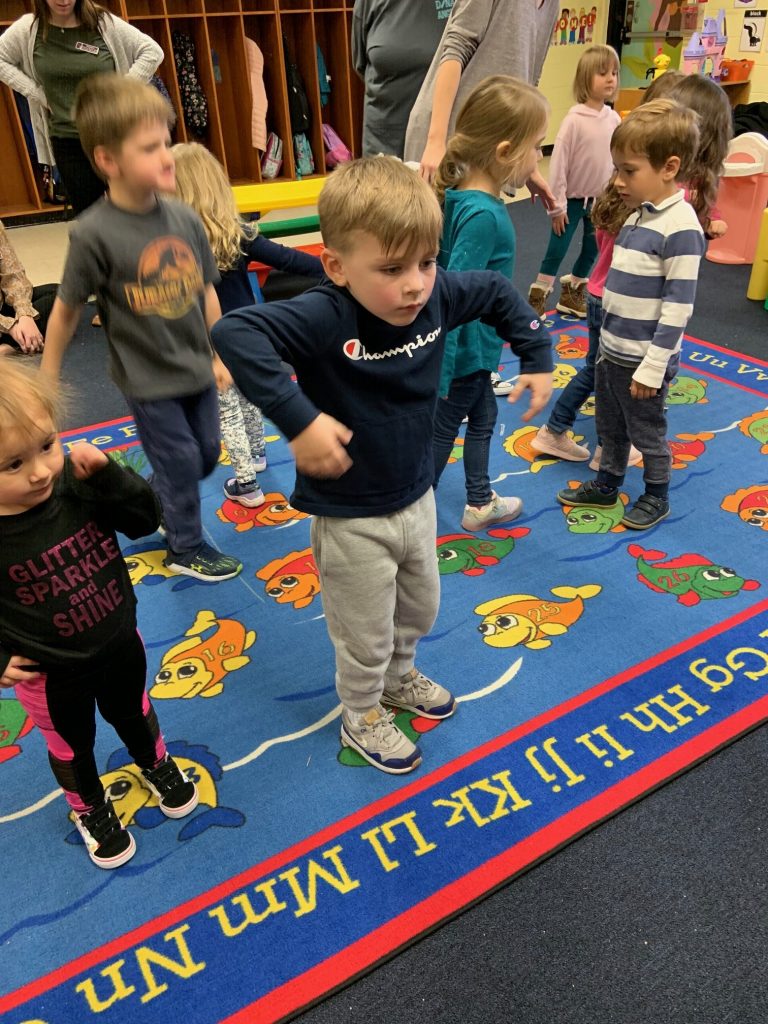
A favorite dance from that day, the Robot!
Lesson
Teach students musical terms and implementing them into everyday life
Recommended Ages
Pre-school to first grade
Vocabulary
Solo: a piece or a section of a piece of music played or sung featuring a single performer
Improvise: the creative activity of immediate (“in the moment”) musical composition, which combines performance with communication of emotions and instrumental technique as well as spontaneous response to other musicians or dancers
Tempo: the pace or speed at which a section of music is played
Directions
Step 1 Read a short biography picture book about MLK to the class to give them some background on who he was, what he stood for, and why his message is so important.
Step 2 The art portion of class was dedicated to coloring cut outs of each student’s right arm (traced and cut out the week prior). The colored arms were all put together in a collage to celebrate the diversity of the class room.
Step 3 The music portion of class involved one of the class’ favorite activities Freeze Dance, but with a twist.
Each student was tasked to create or improvise their own unique dance move that represented their individuality. One student would take a turn leading the class in the dance they made up while we played a few rounds of freeze dance.
Each student had a turn to lead the class in their unique dance, as well as play percussion along with me and take a percussion Solo as the rest of the class tried to replicate, and show off their new dance moves!
Before we started to play and dance, I asked the student who was leading each dance if they wanted to play fast or slow. I then encouraged the class to follow along and play/dance to the Tempo set by the leader.
Reflection
Learning to Solo, Improvise, and follow Tempo is imperative to any musician’s development. These skills are also invaluable in every day life. Soloing helps build confidence, as well as encouraging the development of a personal voice and individuality. Improvisation is a great exercise for the development of problem solving skills. Learning to follow Tempo not only promotes good listening and direction following, it is also great for the development of hand-eye-coordination.
The student’s really enjoy Improvising and Soloing every chance they get. I find that they like being involved the most when allowed to experiment and make decisions on their own. It is hard for Pre-School students to grasp the concept of following a Tempo, however, it is helpful to include an element of motion in the activity in order to help students connect the dots between what they are seeing and how they are moving, with what they are hearing.
About the author: Jim Burkhardt is a musician and educator in the Philadelphia area specializing in percussion. This is his second semester teaching with ASI. Jim aims to instill the importance of music, and it’s connection to culture and everyday life in his students, as well as expose them to music from around the world.

